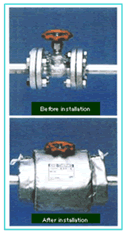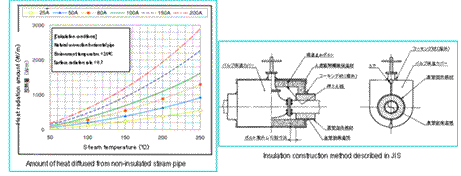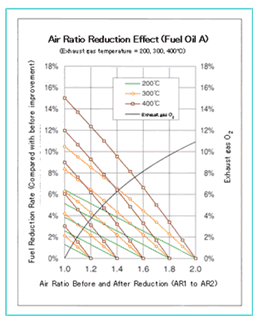- Existing problem
- Non-heat insulated parts are contained in steam pipes, drain pipes and hot water pipes.
- Improvement
- Install simple insulation to prevent heat radiation.
- Advantage
- Reduction in boiler LPG = 1,096m3/year = 2,268kg/year
(¥125,000/year)
When:
- 150°C steam pipe 50A: Piping x 3m + Valve (corresponding length 1.28m) x 6 units + Flange (0.49m equivalent) x 20 units = Total corresponding length 20.48m
- 90°C drain pipe 25A: Piping x 5m + Valve (corresponding length 1.21m) x 4 units + Flange (0.54m equivalent) x 10 units = Total corresponding length 15.24m
- Heat radiation amount from non-insulated piping (from graph): 50A piping = 400W/m, 25A piping = 100W/m
- LPG specific weight = 2.07kg/m3
|
 |
|
Reference
- Because valves and flanges have large surface areas, insulation will be required as for piping.
- Beyond a certain thickness of insulation material, the additional insulating effect will be small.
|
 |
|
